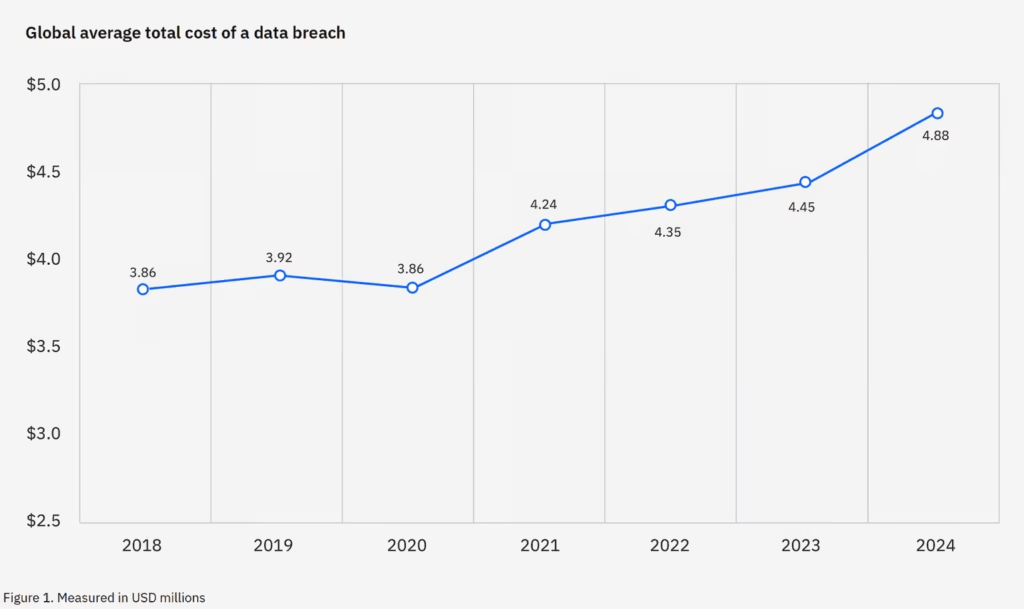By Evan Fisher, Chief Operating and Financial Officer, OberaConnect, LLC
In today’s volatile digital landscape, resilience is no longer optional – it represents a strategic financial lever. Cyber threats are intensifying, regulatory demands are mounting, and legacy systems grow increasingly fragile. For CFOs, the question is clear: how can you allocate capital effectively to strengthen IT infrastructure and safeguard business performance?
Resilience as a Financial Imperative
The cost of a data breach has climbed to unprecedented levels. In 2024, the global average breach cost hit $4.88 million, a 10% year-over-year increase and the highest figure recorded in recent years (IBM, Cost of a Data Breach Report 2024).

In the U.S., the average cost was $9.36 million. These figures cover detection, lost business, response, and regulatory penalties. For CFOs, failing to account for IT resilience in budgeting risks exposing the organization to steep operational and reputational setbacks.
Reframing Resilience as Value Creation
Traditionally, IT resilience budgets are viewed as non-revenue expenditures. But CFOs can flip that framing – investments in resilience yield valuable returns:
- Risk Mitigation: Every dollar dedicated to strengthening infrastructure can lower the financial fallout from breaches or downtime.
- Regulatory Alignment: Proactive investment in infrastructure helps smooth the path to compliance and avoids expensive last-minute fixes.
- Stakeholder Confidence: A company known for dependable, secure systems attracts investors and clients who prize stability.
Capital Allocation Strategies for Resilience
- Target High-Impact Systems First
Conduct a financial risk analysis to pinpoint the most vulnerable legacy systems. Allocate capital to those areas with the highest potential for business disruption or regulatory exposure. - Model CapEx vs. OpEx Trade-Offs
As organizations shift to cloud or hybrid setups, spending often moves from capital expenditures to recurring operational costs. CFOs should model cash flow implications carefully to align upgrades with financing strategy. - Strategic Contingency Funds
Build a budget reserve for cyber events or infrastructure failures. Treat this not as excess, but as a strategic buffer against unpredictable volatility. - ROI Modeling for Resilience Investments
Quantify ROI through metrics such as avoided downtime, reduced insurance premiums, or faster compliance approvals (EY). - Leverage Cyber Insurance as a Complementary Backstop
In the U.S., cyber insurance claims frequently average above $150,000 for small businesses, with larger enterprises often facing multi-million-dollar payouts (TechRadar, 2025). CFOs should evaluate cyber insurance strategically to supplement infrastructure investments.
Cross-Functional Collaboration
Effective capital deployment requires partnership with CIOs and COOs. Align budgets with operational realities and validate technical priorities through joint planning. Harmonizing fiscal discipline with operational continuity builds not just resilient infrastructure, but also shared accountability across leadership.
Conclusion: The CFO as Enterprise Guardian
Allocating capital for resilience is more than a financial exercise – it is a strategic signal. By directing funds toward IT stability, CFOs send a message to stakeholders that the company is prepared, forward-looking, and financially disciplined. In an era defined by disruption, the CFO who budgets for resilience is not just managing costs – they are protecting enterprise value and shaping the conditions for long-term success.

EVAN FISHER
Chief Operating and Financial Officer OberaConnect, LLC
Evan Fisher serves as Chief Operating and Finance Officer at OberaConnect, where he aligns strategy with execution to drive sustainable growth. With a background in operations and finance, he optimizes systems, strengthens decision-making, and builds structures that power scalable, tech-forward solutions. At OberaConnect, Evan focuses on creating efficiency, clarity, and measurable impact—ensuring clients and communities benefit from technology that is simple, reliable, and expertly delivered.
Let’s build something smarter, together.
Connect with our executive team to begin building better IT.
